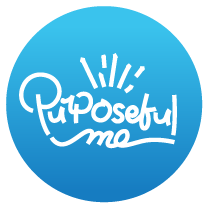Right And Wrong
Many of us only think in absolutes; right or wrong, white or black, love or hate and the list goes on. Why can’t it be both? The Marmite advert is about loving or hating it, and that assumes people can only be one or the other. The reality is that someone might find marmite on toast disgusting but be intrigued by Marmite ice cream especially when paired with other flavours.
As the conflict between Russia and Ukraine deepens, most of the positions people have taken can be likened to taking a position on Marmite. Some blame Russia for the invasion of a sovereign nation, others blame the West for stoking the flames that became a wild raging fire whilst maintaining a distance from the fall out.

Yet others blame Ukraine for allowing itself to be a puppet for the West and applaud Putin for defending his nation’s borders; and this is without getting into any other conspiracy theories.
Who is wrong and who is right out of all these arguments. Or can there be an element of truth in all of them? Can people be both right and wrong at the same time? I have seen a lot of divide in people’s opinions and no one is budging after many arguments, so for most the jury is still out. Some argue like they are privy to what goes on in the minds and chambers of the world leaders.
The people with the truth will keep mute or only tell us the version they choose, while everyone fights for their opinions to be heard and accepted at all costs.

In reality we are likely to take positions that align with any past biases and views that we have, what the media is telling us and what feels comfortable for us to accept based on our faith in mankind and God.
As Aristotle said, “It is the mark of an educated mind to be able to entertain a thought without accepting it.”
This isn’t a time to win intellectual and political arguments about the conflict; rather it is time to look at the true cost of the conflict, who pays the price and who makes money at the end of it.
The cost of the conflict can be seen in the unnecessary lives lost, the panic of those fleeing for their lives, the injured, elderly and the young children facing terrible conditions in freezing weather. It is seen in the buildings and infrastructures that are being destroyed and it is felt by those who have seen everything they worked for and everyone they love at risk of destruction. It is the post-conflict costs of distrusts, more deaths and poor living conditions.

Those paying for the conflict are the parents losing their children to a war they didn’t see coming, it’s the children that will grow up as orphans, it’s the partners losing their loved ones. People have paid for this conflict through loss of their lives, savings and properties. Many around the world will pay in the form of increased energy prices amongst others. The cost is more far reaching than we realise.
Those making money from these crisis are the weapons industry and those who will go in afterwards to win contracts for the rebuilding. It’s those with a hidden agenda for domination of any sorts and at any level.
This whole saga leads me to a Yoruba expression: “Ohun to ko oju si enikan, ehin lo ko si elomiran.” Translated it means, “What has its face to you may have its back to another person.”
A friend shared a story he read on Facebook about a teacher who people thought was deranged because he always seemed to have a differing perspective. He wasn’t valued until he died and tributes came in celebrating an attribute that once made him persona non grata.
In one particular story, he had a chat with somebody, and asked: They say I am mad, but I am not mad, it’s just that I don’t see things the way they see it, which is not a crime, is it? He then proceeded to scribble something on the ground, and asked the person he was talking to: “What did I just write?” The person looked at it, and said: That’s “W”.
He then told the person: Now, come to my side, and look at it again. What do you see?”. Of course, the person saw “M”. Next, he said, if you stand to the left, you will see “E”, and if you look from the right side, you will see “3”.
The conclusion then is this: What has its head to you may actually have its tail to somebody else. We won’t all be united on our views about this conflict and many other crises the world will face but we can be united in our responses.

We can be united in thinking about the victims and praying for them, we can write our members of parliament to ask them to get the parties back to dialogue and a peaceful resolution. We can raise funds for the victims and encourage the neighbouring countries in their expression of kindness towards their fellow humans.
We can be united in the fact that no nation is immune to its own crisis and we are always a few ignorant, fear-driven, selfish, heartless and ego-fueled decisions away from this sort of calamity. We can be united in condemning violence of any sorts and towards any people. We can be united in not spreading false information, propagandas, insensitive memes or videos and making jokes of this situation.
And more than anything, we can’t afford to lose our humanity in a bid to prove a point or win an argument. As they say, those that live in glass houses should not throw stones.
Thanks for reading my post. Please check out and subscribe to PurposefulMe podcast on Anchor, Spotify and Google Podcast services. Have a great week.

